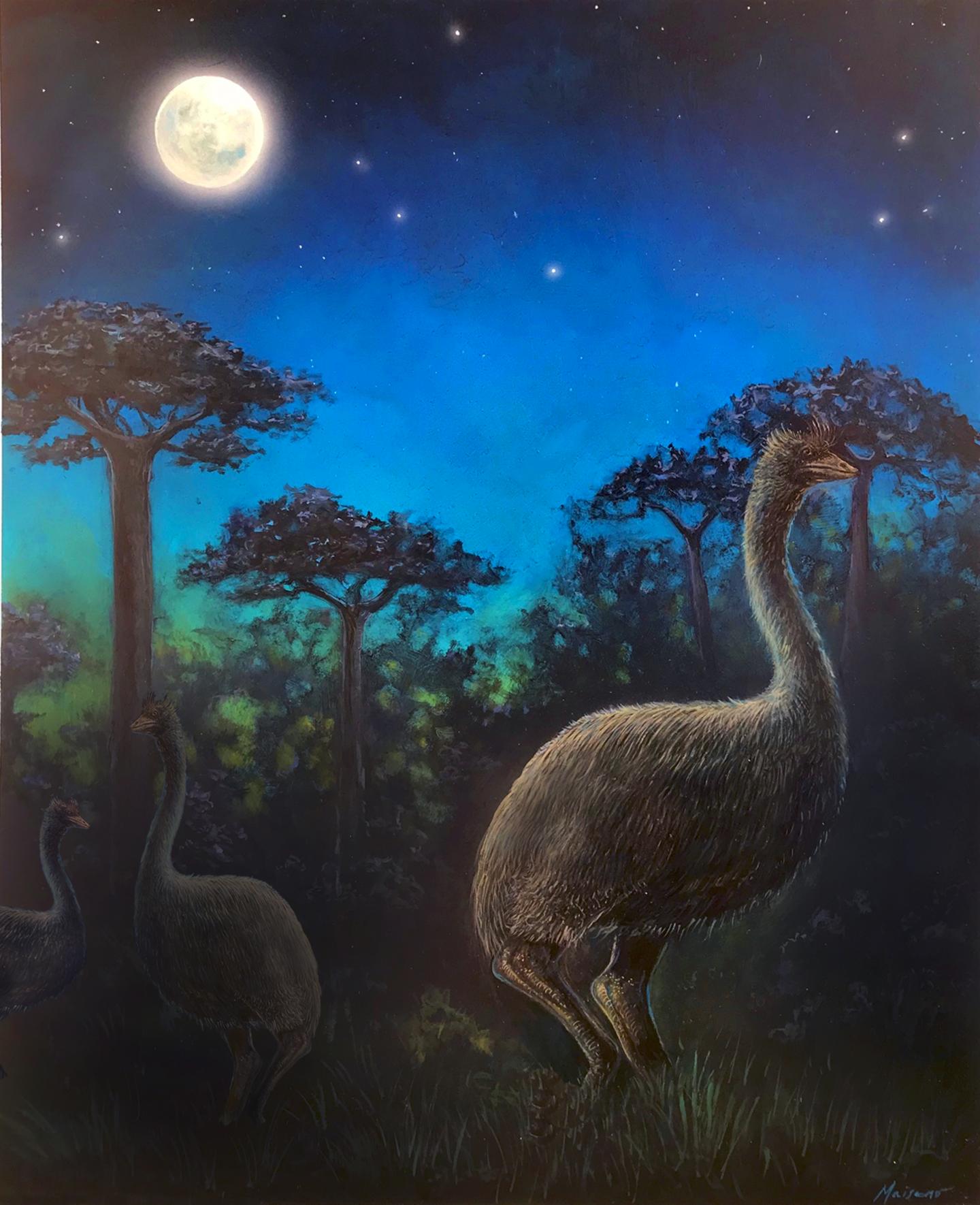Big Bird, like his name suggests, was unrealistically huge. However, scientists say they have now discovered a real bird species that was even larger than the fictional Sesame Street character. Standing approximately 10 feet tall, elephant birds would have towered over Big Bird, who is a little over eight feet tall.
New research suggests the species of giant flightless birds on Madagascar disappeared from Earth between 500 and 1,000 years ago. Researchers also say they were nocturnal and almost blind. Scientists analyzed skulls belonging to two bird species and published their findings in the journal Proceedings of the Royal Society B.
“As recently as 500 years ago, very nearly blind, giant flightless birds were crashing around the forests of Madagascar in the dark. No one ever expected that,” study co-author and University of Texas professor Julia Clarke said in a statement.
Since birds’ skulls are fitted tightly around their brains, the size and shape of the skull helps scientists determine the structure of the brain. Scientists conducted reconstruction research on elephant birds and found that their optic lobes, which are nerves that control eyesight, were almost absent.
“Certainly, the most surprising was just how small the elephant bird’s optic lobes were,” study co-author and University of Texas Ph.D candidate Christopher Torres told CNN. “The few studies that speculated on what their behavior was like explicitly assumed they were active during the day. Then, once we made the connection to nocturnality, we were blown away. It meant revising more than century’s worth of attempts at reconstructing the elephant bird lifestyle.”
Even though elephant birds would have been taller than today’s fictional Big Bird, researchers believe they ate only plants. They believe elephant birds probably became nocturnal thanks to an ancestor they are believed to share with kiwi.
“A nocturnal lifestyle is often an evolutionary response either when it’s too dangerous to come out during the day or when what you eat comes out at night,” Torres added.
Their discovery that elephant birds were probably mostly active at night is nothing short of groundbreaking.
“No one has ever suspected that elephant birds were nocturnal,” Torres said in a statement. “The few studies that speculated on what their behavior was like explicitly assumed they were active during the day.”
Scientists also looked at a larger group of birds, which includes ostriches, emus, cassowaries, rheas, kiwi, moa and tinamous. These species are believed to have formed the relationship between the development of the sense of smell and habitat preferences.
“Species in this group that live in forests seem to rely on a well-developed sense of smell to help them forage in conditions where visual cues might be obstructed,” Torres told CNN.
Scientists also wondered why elephant birds became extinct, and that mystery still goes on unsolved. They collected some clues which suggest their habitat was threatened by humans and climate change.
“Recent studies have suggested that elephant birds outlived initial contact with humans by many thousands of years based on toolmarks observed on radiometricly dated remains,” Torres said.





